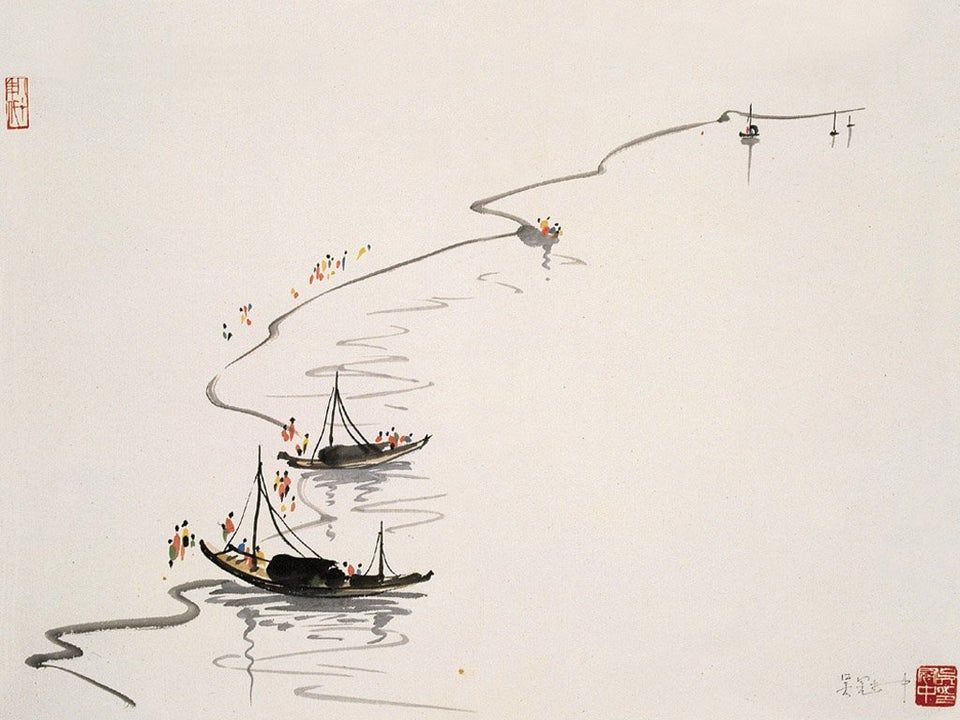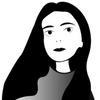Exploring Liu Cixin’s science fiction writing

I’ve been trying to better understand Liu Cixin’s writing style in hopes of improving my own. (That is, his Chinese writing translated into English.) One story caught my attention on a recent Sunday afternoon, as I rummaged around my house pretending to clean while daydreaming about dinosaur technocrats. Here is that story.
Included in Liu Cixin’s science fiction collection To Hold Up the Sky, “Cloud of Poems” tells the tale of three characters–a human, a dinosaur, and a god–as they each wrestle with varying appreciations of art (epitomized as Chinese classical poetry) and technology. The human believes the beauty of poetry can never be surpassed by technology. In contrast, the dinosaur believes “there’s nothing inside”– words are just words, atoms are just atoms. The god however straddles both perspectives. His personal journey through technology and art comprises the main plot of the story.
Structure & Characters
Introductory section
The story opens with a snapshot of a scene in motion– Save the Cat! style.
“A yacht bore Yi Yi and his two companions across the South Pacific on a voyage dedicated to poetry… Upon successful arrival in a few days, they would climb through the Earth’s crust to view the Cloud of Poems.”
After revealing this bit of movement, narrator Liu quickly details the history of the environment before us. We learn that humanity now lives inside a hollowed earth. We learn that gravity has changed. And we learn of the physical laws governing a new sun located in the heart of the hollow.
Now that the reader can comprehend the scene before her, we are introduced to the two companions: Bigtooth (大牙) the dinosaur, and a wiry man who “resembled a bold calligraphy character splashed in the space between sea and sky”: Li Bai, the famous classical poet.
Using famous characters from history is a style of Liu’s. In The Three-Body Problem for example, John Von Neumann, Albert Einstein, and even cybernetician Norbert Wiener make appearances. Also similar to The Three-Body Problem, the character of Li Bai is in fact a projection, a clone (as we learn later in the story). Using these famous characters in new worlds can be a helpful tool because they’re information-rich. It’s like using an accelerated pass for character development, affording attention from the reader to focus on other elements of the story.
Section: The Gift
This next section carries the most weight. We are introduced to how these characters know each other, and we witness the event that kickstarts the trio’s journey. Liu artfully weaves in details–primarily through conversation that shows rather than tells– of character, space, and place. We glimpse the characters’ first encounter and how the god (spoiler alert!) transmorgifies himself into Li Bai. Layer by layer, we learn more about the god, his motivation (obsessed art lover), and the nature of the story’s driving quest: to master human culture and surpass the original great poet Li Bai.
The god version of Li Bai also has his first fail. (Phew, don’t we all?) First he has writer’s block, then he drinks too much wine. Liu uses these early attempts to share Li Bai’s journey with us. As the reader, we get a sense of Li Bai’s effort… yet we see enough to be content allowing time to skip ahead to the next iteration.
Section: The Second Path
Two months later, we meet the trio once again. We learn of the god Li Bai’s most recent adventures: “I’ve spent a lot of time on personal enrichment.” But the smugness of the clone has weakened. He believes he has failed to surpass the true Li Bai. It is only in conversation with the human Yi Yi that the god realizes a new approach to his goal: to take the alternative/ second path. Rather than use experience alone, he will use technology to surpass the poet Li Bai. The god hatches a plan to achieve his goal.
Section: The Ultimate Poetry Composition
From here we enter the “fast forward”: a quick synopsis of accumulating events that zips by us as the god works to achieve his goal. We also see how members of the trio are impacted in the process. Liu uses his trusted narrator voice to give the high level details, a society reckoning here, a civilization resettlement there. It is only at the end of the roundup that Liu concludes with a more localized, personal story: Yi Yi’s personal sentiment towards the recent events. “But Yi Yi believed in Earth’s future. No matter how many challenges lay ahead, humans were going to become people once more.”
Section: The Cloud of Poems
In this culminating section we are re-introduced to the scene from the story’s start. We learn what has changed from the previous environment to now, and we see the final result of Li Bai’s quest, his lofty project executed in detail. But what is the outcome? Is the god Li Bai (and by extension the dinosaur Bigtooth and Yi Yi) satisfied with the result?
Luckily there is resolution. In fact, the god’s journey is on full display: He realizes that the aim of his megaproject was for nought; one cannot master the art of poetry simply through technology. The tool of technology must coexist with organic human creativity. We see that Li Bai the god has already internalized this understanding, soothed to calm. Yi Yi, even Bigtooth, seem to agree. “The good poems in the Cloud of Poems don’t belong to anyone yet. Hopefully humans will be able to write some of them.”
Hard Science
Most of Liu Cixin’s work would seem incomplete if it did not involve, somewhere, someplace, a deepdive into a particular math or science topic. Whether a recap of Newton’s Laws like in “The Village Teacher” or a detailed description of gas generation like in “Fire in the Earth,” this short story is no exception. This time, Liu bestows the task to Bigtooth, who details the energy implications of storing all possible permutations of Chinese classical poetry. Bigtooth even uses the gameboard of weiqi, or Go, to help communicate his point to Yi Yi– and by extension to us, the reader.
B: How many grid intersections are on the board?
Y: There are nineteen lines in both the vertical and horizontal directions, for a total of 361 points.
B: Good, each intersection can be occupied by a black piece, a white piece, or no piece, a total of three states in all. So you can think of each game state as using three characters to write a poem of nineteen lines and three hundred and sixty-one characters.
Now if we exhaust all the possible permutations of these three characters in this poem format, how many poems can we write? Let me tell you: 3^361 or 10^172!
Y: Is that a lot?
B: Idiot! In all the universe, there are only 10^80 atoms!
Conversation is often the best vehicle for teaching.
Lessons
There’s a lot to like in this short story. First are the artifacts: Chinese classical poetry! Historical figures! Dinosaurs! (A technocrat dinosaur no less.) Such rich elements make the art of “show not tell” a bit easier. For example, the “stroke of a brush between sea and sky” alludes to so much more than words on a page. The ink loosens in the wet water, while appearing stringy on the dry parchment of air: a wiry figure with many facets. Even the translation of classical poetry by Bigtooth is character development. Rather than simply communicate the idea of fluid movement, the technology-inclined character explicitly translates the Yellow River featured in a well-known classical poem as “made of the chemical compound consisting of one oxygen atom and two hydrogen atoms.”
Finally, when it comes to lessons, we cannot forget the obvious moral of the tale: technology for technology’s sake is not enough. It must coexist with art.
That’s what science fiction writing is all about, right? 🦖
Notes
Something I don’t cover in the piece above is the use of Yi Yi as an advisor / mentor figure, connecting us (as human tour guide) with the rest of the story. He is the first character we meet, and the last one we contemplate. But it isn’t his change that we follow through the story.
Writing Reflections
This piece took me about 2 hours of brainstorming and 3.5 hours of writing, albeit spread across two days. I feel out of practice though. It was helpful to set a limit: “Write only 2 hours today” and decouple writing from the space to brainstorm. Morning coffee certainly helped.
